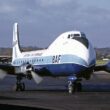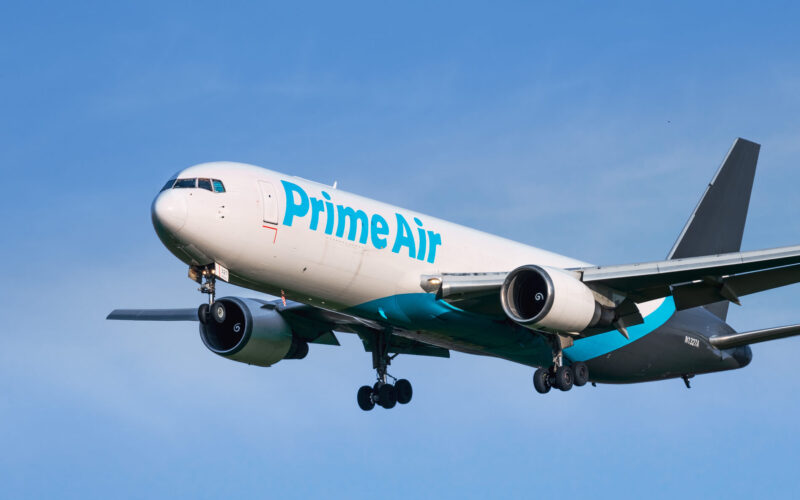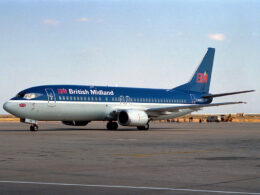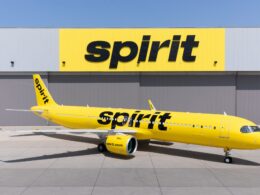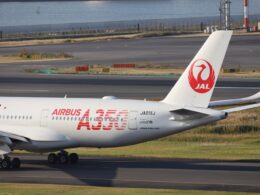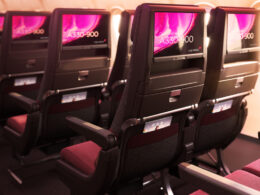While some met 2021 with a lot of hope to return to some sense of normality, others went on a shopping spree for a way to escape reality. One of those crazy shoppers was Amazon, as ironic as it sounds, who bolstered its freighter fleet with more than a dozen examples of now-retired Boeing 767 aircraft. But the e-commerce giant was not the only airline to stock up on used wide-body aircraft – might this become a trend in 2021?
Difficult environment
Despite the doom and gloom of 2020 over, the onset of challenges remain for aviation. Travelers, despite the uptick in confidence, are nowhere near 2019-levels, which in turn impacts the need for aircraft.
“The fact that people have also already reserved flights for the Easter period shows how confident they are,” commented Lufthansa Group chief executive Carsten Spohr on Wirtschaftswoche in early-December 2020. However, at the same time, Spohr assumed that the German airline group “will be able to achieve an average of half the level of 2019 again.” Yet demand, according to some executives, including JetBlue’s (JBLU) Vice President of Network Planning Andrea Lusso, is more like a rollercoaster, rather than a steady ride. Lusso, who spoke at Routes Reconnected in December 2020, stated that everything has to do with “customer confidence.”
Overall, Easter of 2021 could provide the first insight into where consumer demand is at – it is the first major holiday of the year across many, but not all, countries. For example, International Airlines Group (IAG) (IAG), whose airlines are based in many Catholic countries, saw a spike in travel in April compared to March and May 2019. If in March and May year-on-year (YoY) passenger numbers increased by 5.7% and 4.1%, respectively, in the month between the two, the YoY numbers shot up by 7.3%.
The unstable nature of demand could once again force airlines to rethink their fleet deployment plans. While many chose to immediately retire or forward their aircraft retirement plans, there are still plenty of older wide-body aircraft that remained in operation, including the aforementioned Boeing 767, or the Airbus A330.
Shopping around
Some companies used the opportunity to snatch up some of the older frames on the cheap, as basic supply and demand principles were in place for the aircraft market.
For example, the Airbus A380’s residual value has dropped as much as $47.2 million compared to a year prior, going from $105.4 million to $58.2 million as of March 31, 2020, according to Doric Nimrod Air Three, an aircraft leasing company. Half a year later, the market deteriorated so much so that the lessor concluded that an impairment loss, which occurs when an asset has less carrying value than fair value, was “not practicable.” While the Airbus A380 was one of the few aircraft that airlines absolutely wanted to rid of, the trend was visible that aircraft, in particular wide-bodies, were brushed aside.
Amazon was able to snap up 11 Boeing 767 aircraft, starting with four units bought off WestJet in March 2020 and seven 767s obtained from Delta Air Lines at the cusp of 2020. The two purchase deals would mark the first time that Amazon has actually bought aircraft, rather than wet-leased them from other operators like Atlas Air. The two sets of aircraft are set to join the e-commerce giant’s fleet throughout 2021 and 2022, with the ex-WestJet 767s already undergoing passenger-to-freight conversion, according to Amazon’s announcement from January 5, 2021.
“Our goal is to continue delivering for customers across the U.S. in the way that they expect from Amazon, and purchasing our own aircraft is a natural next step toward that goal,” commented Vice President of Amazon Global Air Sarah Rhoads.
Cargo – primary driver of purchases?
Together with the grounding of passenger aircraft, cargo capacity shrunk, as many of the world’s shipments were carried in the belly of traveler-carrying jets. Add in the pleas to stay inside, resulting in booming e-commerce and the colossal effort to transport the COVID-19 vaccine across the globe, and the demand for cargo capacity is through the roof.
Naturally, airlines have adapted to the situation throughout the year. Preighters, carrying cargo onboard passenger cabins, or even empty passenger aircraft handled shipping orders across the globe. For example, IAG Cargo managed to operate 1,000 chartered cargo flights between March and end-December 2020, utilizing “aircraft from the Group that would, in normal times, not be available,” according to the company’s announcement dated January 7, 2021. Its flight that rounded that number, was with a Boeing 777-200 preighter from London Heathrow Airport (LHR) to Los Angeles International Airport (LAX).
“Speaking to some of the e-commerce retailers, the business has grown between 30-40% compared to 2019. This ranged from Singles-Day, Black Friday, Cyber Monday to new product launches such as the new Xbox, PlayStation, iPhone and of course the pre-Christmas rush. It’s interesting to note that despite that a large number of people on government furlough schemes or made redundant, the online buying market has not declined but instead increased to record levels. The side effect of this is that air cargo capacity has further been aggravated,” told AeroTime News Pierre Van Der Stichele, cargo operations director at Chapman Freeborn, a global aircraft charter specialist company.
According to Van Der Stichele, cargo rates experienced a huge increase in price, especially as Volga-Dnepr grounded its Antonov An-124 fleet following a crash landing at Novosibirsk-Tolmachevo Airport (OVB). If one were to hire a Boeing 747-400F for a flight between China and the United States, the price would have varied between $1 million and $1.3 million before Christmas of 2020, according to the cargo operations director.
Since, Volga-Dnepr restarted An-124 operations on December 26, 2020, at first with one aircraft (registered as RA-82077). The second freighter (registered RA-82047) joined on January 5, 2021, while the remaining 10 have not flown since.
Short-term surge or a long-lasting trend?
Whether that demand for cargo will hold up is, of course, a great question to ask. After all, companies are bracing for a recovery sooner than later – some are expecting 2019-levels of travel to return as soon as 2022, while the glass-half-full crowd has predicted the recovery happening sometime in 2024 or even 2025.
Nevertheless, as passenger flights begin to return, so does the capacity for cargo. While consumer practices could very well shift towards more e-commerce and less physical shopping trips, a return to 2019-levels could induce a headache for cargo operators. 2019 was the worst year for cargo demand since 2009, according to the International Air Transport Association (IATA) data, when the global financial crisis struck.
The latest update by IATA, published on January 7, 2021, showcased that demand has improved in November 2020 compared to the month prior. However, according to the association’s chief executive Alexandre de Juniac,
Or it might not. For one, South Korean low-cost carrier T’way Air has signed a Letter of Intent (LoI) in December 2020 to introduce three Airbus A330 aircraft into its fleet in late-2021. The wide-body will allow it to increase the scope of destinations the airline is able to serve and according to the airline, boost its cargo business as well.
“It is a decision to quickly prepare for a new leap forward in the post-corona era,” read a statement by T’way Air, as reported by local media. The low-cost carrier will seemingly drift away from the textbook no-frills model of operating single-type all-economy narrow-body aircraft, like the Boeing 737 and introduce an aircraft from a completely different manufacturer. The struggles of long-haul low-cost carriers have been well documented throughout the years, including several liquidations and bankruptcies, but another entrant always sparks curiosity, especially with an out-of-the-norm focus on cargo business.
The trend of aircraft prices staying on the low side is more than likely to stay. Ultimately, airlines have retired more than a handful of wide-body aircraft throughout 2020 and are possibly more inclined to take up new aircraft, rather than re-activate older jets. Despite the crisis, the pressure for carriers to reduce their emissions has not subsided and instead, with the introduction of the International Civil Aviation Organization’s Carbon Offsetting and Reduction Scheme for International Aviation (CORSIA) scheme on a voluntary basis, has only increased.
And newer aircraft, despite the high initial capital required to acquire them, are much more fuel-efficient, resulting in fewer emissions and in turn, lower costs. The potential operating environment in the short-term future, where demand amongst competitors could be stimulated by lower prices, lessened operating costs could lend a very helpful hand. On the other, older aircraft with cheap price tags attached to them could provide an opportunity to explore new, previously unavailable horizons.

